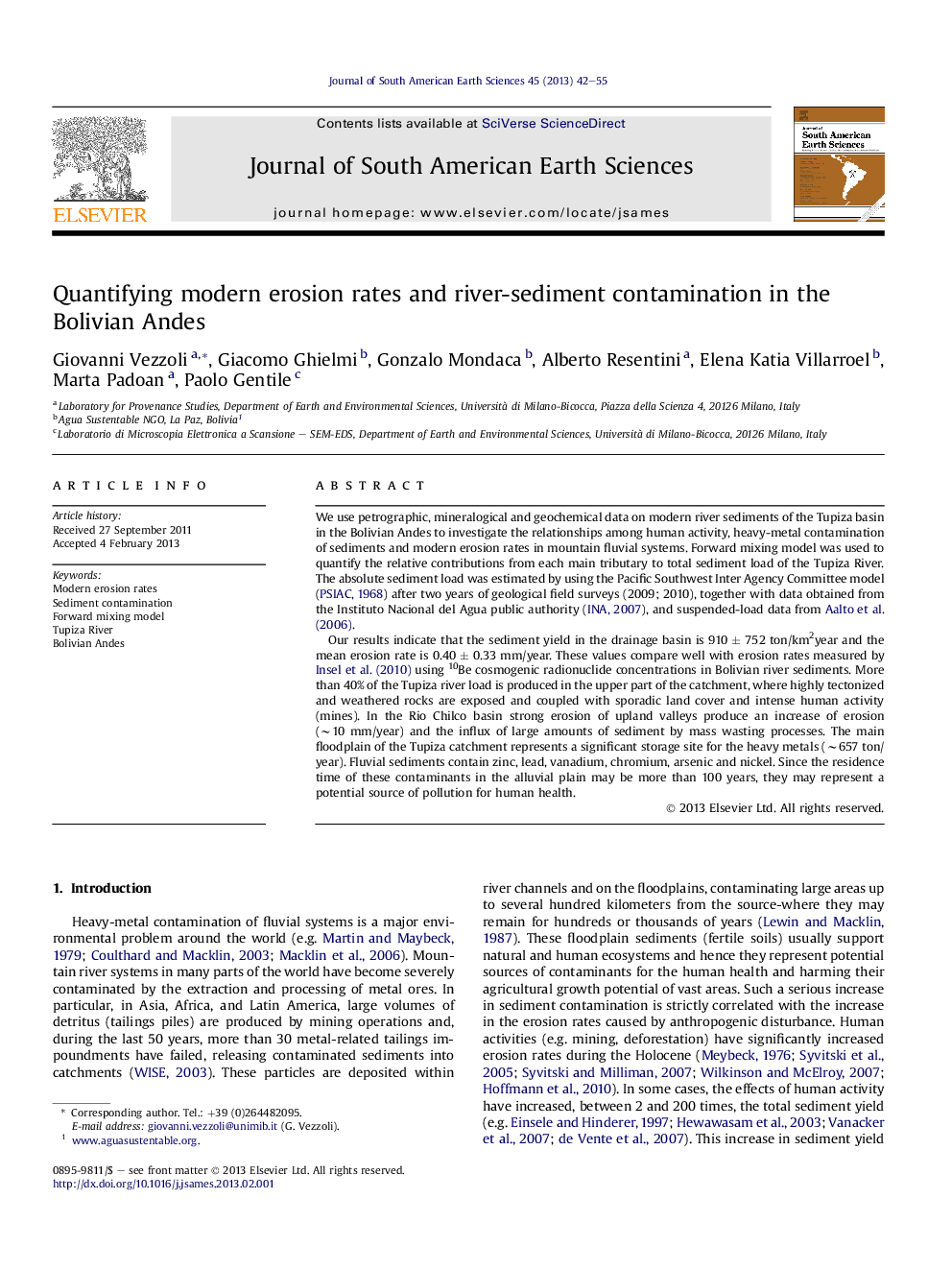| کد مقاله | کد نشریه | سال انتشار | مقاله انگلیسی | نسخه تمام متن |
|---|---|---|---|---|
| 4682333 | 1635164 | 2013 | 14 صفحه PDF | دانلود رایگان |
We use petrographic, mineralogical and geochemical data on modern river sediments of the Tupiza basin in the Bolivian Andes to investigate the relationships among human activity, heavy-metal contamination of sediments and modern erosion rates in mountain fluvial systems. Forward mixing model was used to quantify the relative contributions from each main tributary to total sediment load of the Tupiza River. The absolute sediment load was estimated by using the Pacific Southwest Inter Agency Committee model (PSIAC, 1968) after two years of geological field surveys (2009; 2010), together with data obtained from the Instituto Nacional del Agua public authority (INA, 2007), and suspended-load data from Aalto et al. (2006).Our results indicate that the sediment yield in the drainage basin is 910 ± 752 ton/km2year and the mean erosion rate is 0.40 ± 0.33 mm/year. These values compare well with erosion rates measured by Insel et al. (2010) using 10Be cosmogenic radionuclide concentrations in Bolivian river sediments. More than 40% of the Tupiza river load is produced in the upper part of the catchment, where highly tectonized and weathered rocks are exposed and coupled with sporadic land cover and intense human activity (mines). In the Rio Chilco basin strong erosion of upland valleys produce an increase of erosion (∼10 mm/year) and the influx of large amounts of sediment by mass wasting processes. The main floodplain of the Tupiza catchment represents a significant storage site for the heavy metals (∼657 ton/year). Fluvial sediments contain zinc, lead, vanadium, chromium, arsenic and nickel. Since the residence time of these contaminants in the alluvial plain may be more than 100 years, they may represent a potential source of pollution for human health.
► We characterized petrographic and geochemical data of present-day fluvial sediments.
► Sediment yield is 910 ± 752 t/km2*a and erosion rate is 0.40 ± 0.33 mm/a.
► Fluvial sediments are contaminated by heavy metals.
► The main alluvial plain of the basin represents a storage site for the heavy metals.
► Alluvial sediments are a source of pollution to the ecosystem and human health.
Journal: Journal of South American Earth Sciences - Volume 45, August 2013, Pages 42–55
